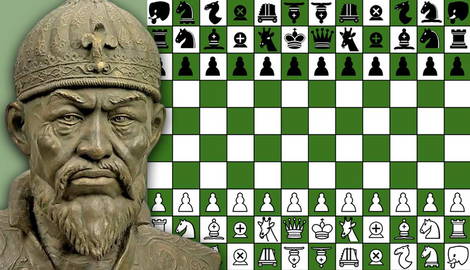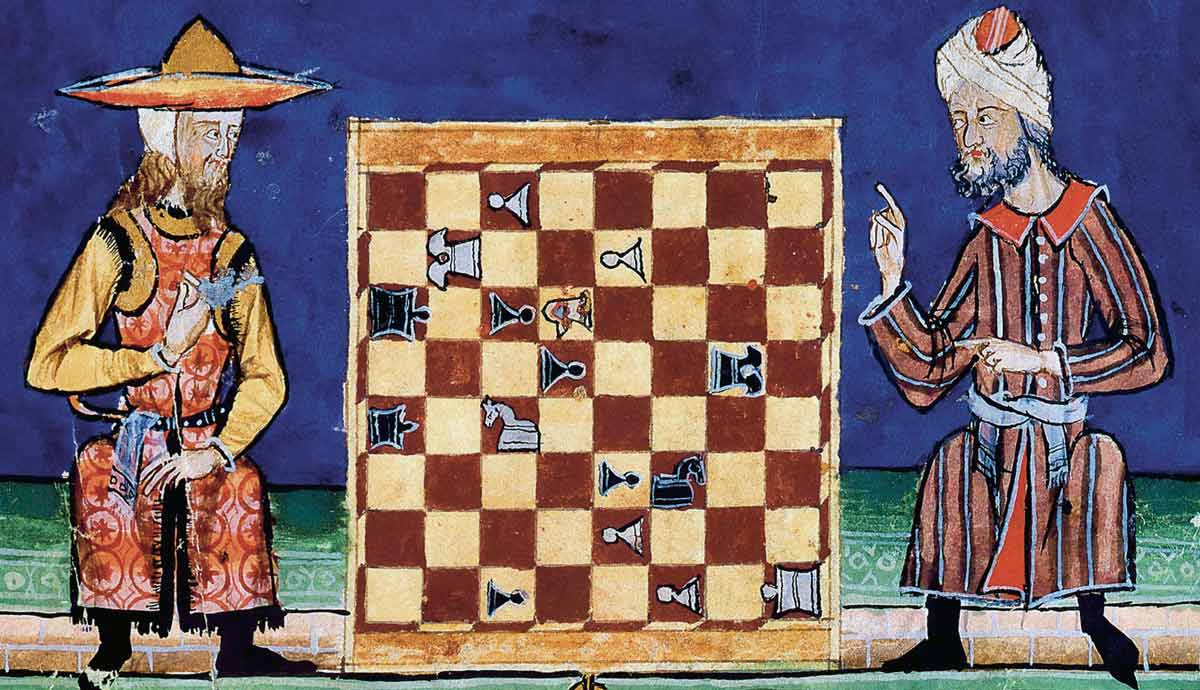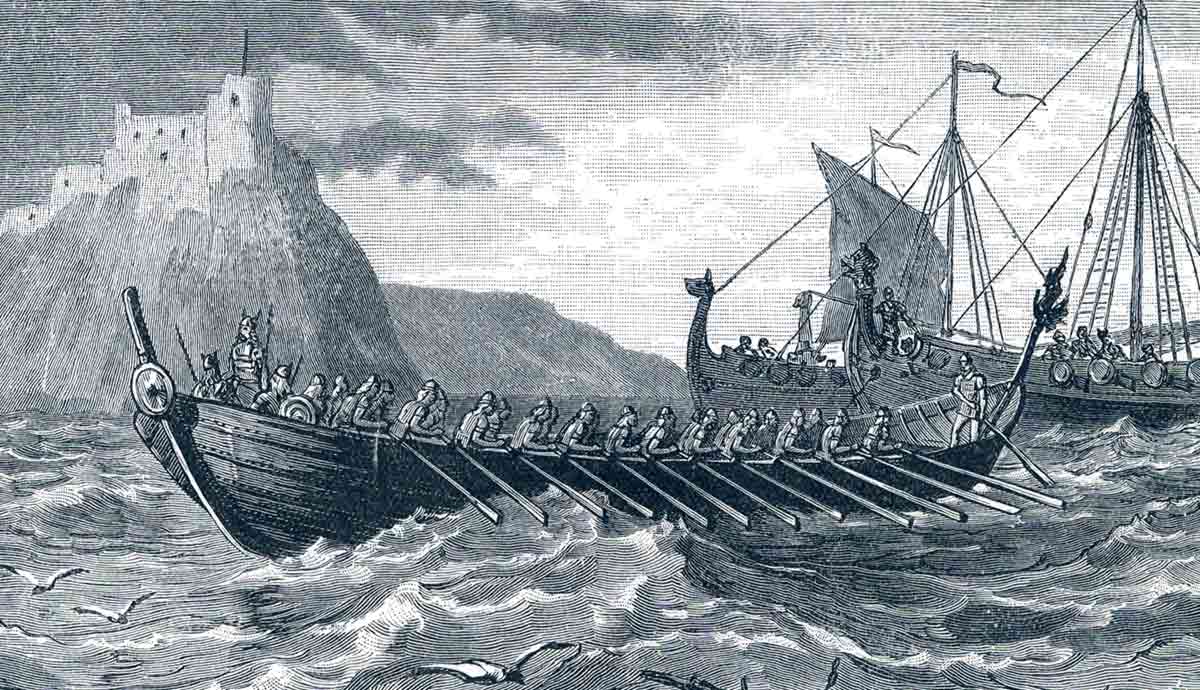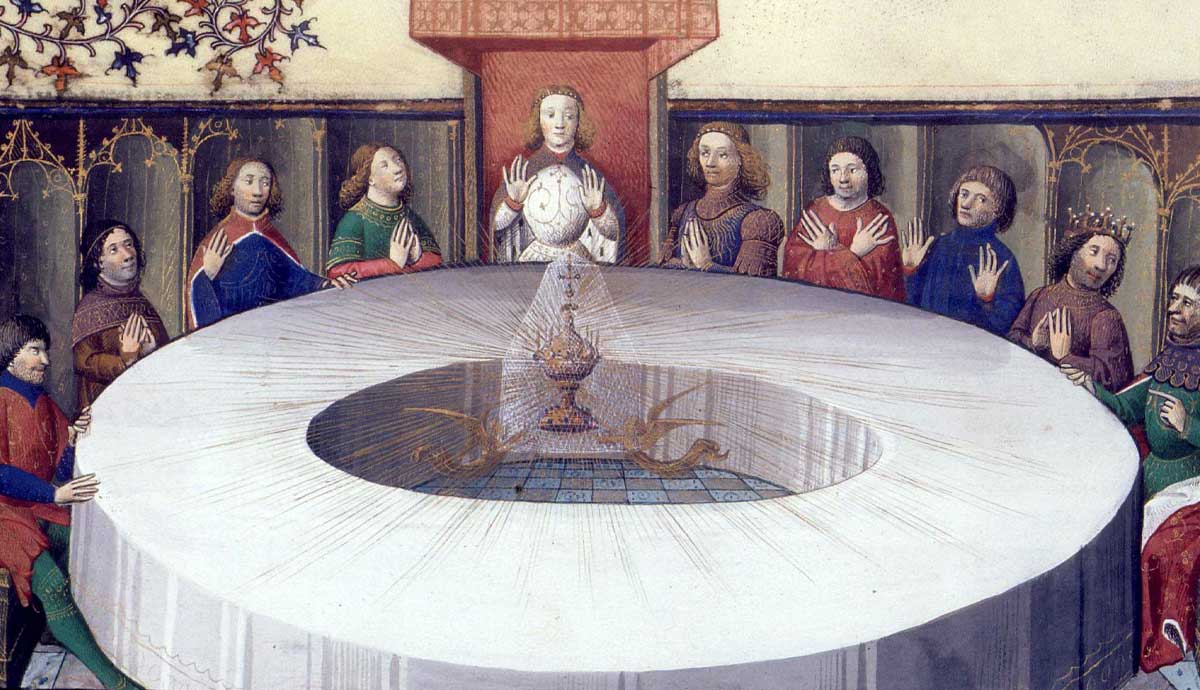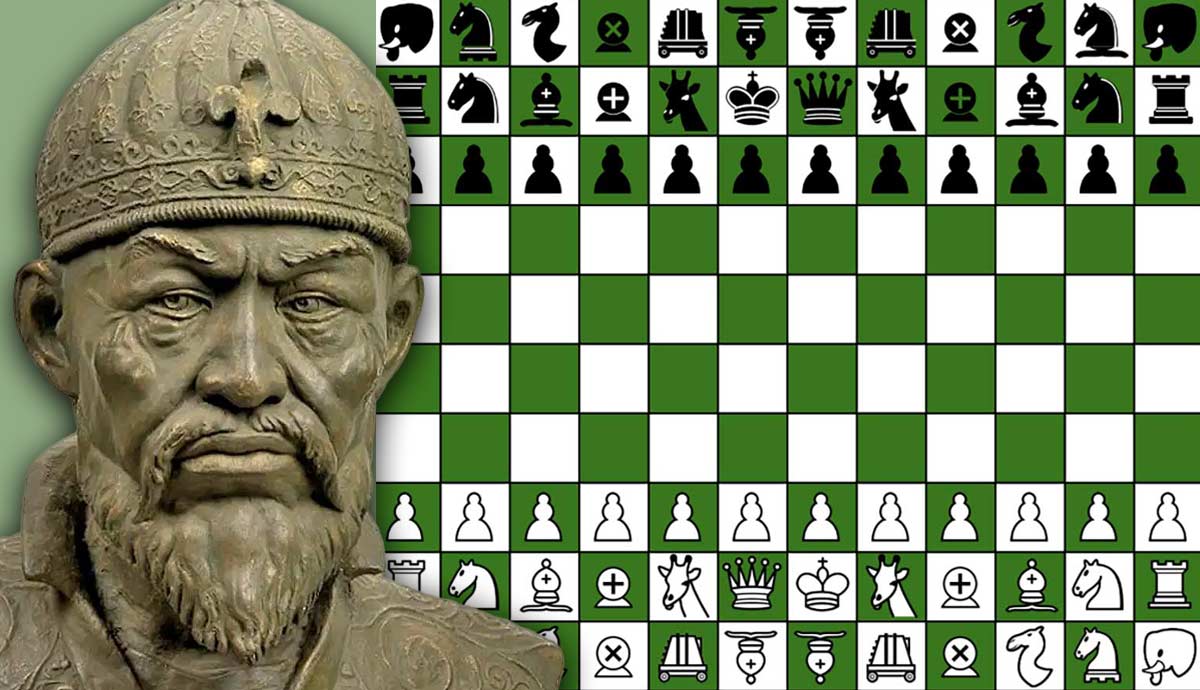
Tamerlane Chess is a medieval chess variant attributed to the 14th-century conqueror Timur, also known as Tamerlane. A complex and richly symbolic game, Tamerlane Chess is played on a unique 10×11 board and features over 25 distinct pieces, each with specialized movements. Known also as Shatranj al-Kabir or “Great Chess,” it evolved from Shatranj, the Persian predecessor of modern chess. Though its precise origins remain uncertain, the game is widely associated with Timur’s court and reflects the martial and hierarchical values of his empire.
Who Was Tamerlane?

Emperor Timur, also known as Tamerlane, was a Turco-Mongol conqueror who founded the Timurid Empire in Central Asia and Persia. Born near Samarkand in present-day Uzbekistan, Timur rose to power following the fragmentation of the Mongol Empire. He modeled his rule on Genghis Khan, claimed descent from him via marriage, and presented himself as the heir to Khan’s legacy and the rightful restorer of his empire to its former glory.
As a young man, Timur was said to be a great admirer of Alexander the Great, another military hero he believed to be his direct ancestor. Obsessed with control of the Silk Road trading route that linked Europe with China, at its height, Timur’s empire extended from India to Anatolia and from the Persian Gulf to the Aral Sea.
As a military strategist, he was notorious for the large-scale massacres that often accompanied his campaigns. Among his most infamous conquests were the sack of Delhi in 1398 and the Battle of Ankara (1402), which culminated in the defeat of the Ottoman Sultan Bayezid I. Revered by some as the “Sword of Islam,” Timur also left a lasting legacy on Islamic culture and the arts.

Thus, beyond his military exploits, Timur patronized architecture, science, and poetry, leaving behind a legacy of grand mosques, madrasas, and palaces. Deeply invested in symbolism and ceremony, he used art, games, and ideology to legitimize his rule. Tamerlane Chess, with its highly structured and militarized gameplay, likely served as both a tool for elite education and a metaphor for his vision of the world: strategic, disciplined, and deeply hierarchical.
The Birth of Tamerlane Chess

Tamerlane Chess emerged during the reign of Timur as a highly elaborate and intellectual evolution of Shatranj, the ancient Persian precursor to modern chess. Designed to reflect the complexity and hierarchy of Timur’s court, the game was played on an expanded 10×11 board – significantly larger than modern chess boards – and introduced a host of innovative features. Among these were two special “citadel” squares, strategically placed and reserved for royal pieces such as the king, offering both defensive refuge and symbolic significance.

Altogether, Tamerlane Chess boasted over 25 unique pieces, such as the Giraffe, Elephant, Camel, War Machine, and Pick. There were multiple types of pawns, each representing different roles (such as the ‘pawn’ of elephants or the ‘pawn’ of camels). Unlike modern chess, pawn promotions were allowed only when a pawn returned to its original square after circling the board – further emphasizing long-term strategy.
Notably, many of the pieces echoed military or administrative roles within Timur’s empire, turning the game into a stylized model of imperial governance. The rules were more complex than in traditional chess, emphasizing planning, hierarchy, and adaptability – qualities deeply valued in Timur’s court. The game, while probably reserved for the elite, no doubt served both as entertainment and intellectual training for the ruling class.
Tamerlane Chess Today

Following the decline of the Timurid Empire, Tamerlane Chess gradually faded from popular use. Meanwhile, in Europe, Shatranj evolved into what would become modern chess during the 15th and 16th centuries – a faster, more dynamic game that gained widespread appeal. This European transformation ultimately eclipsed older and regional variants like Tamerlane Chess, which were largely forgotten beyond scholarly and historical interest.
In recent times, however, the game has seen a quiet revival among historians and dedicated chess enthusiasts. Drawing from surviving Arabic texts and Persian manuscripts, researchers and hobbyists have reconstructed the rules and gameplay of Tamerlane Chess. These reconstructions, now accessible through various online platforms, have even inspired handcrafted boards and custom pieces modeled on historical descriptions. While these efforts are more about historical reenactment than competitive play, they highlight a lasting fascination with the game’s cultural and intellectual significance.

While it is no longer played in popular competitive settings, Tamerlane Chess remains a fascinating window into the politics, military planning, and courtly life of the Timurid Empire. It serves not only as a curiosity in chess history but also as a cultural artifact, echoing the power, grandeur, and complexity of Timur’s empire and his enduring legacy as both conqueror and patron of the arts.
